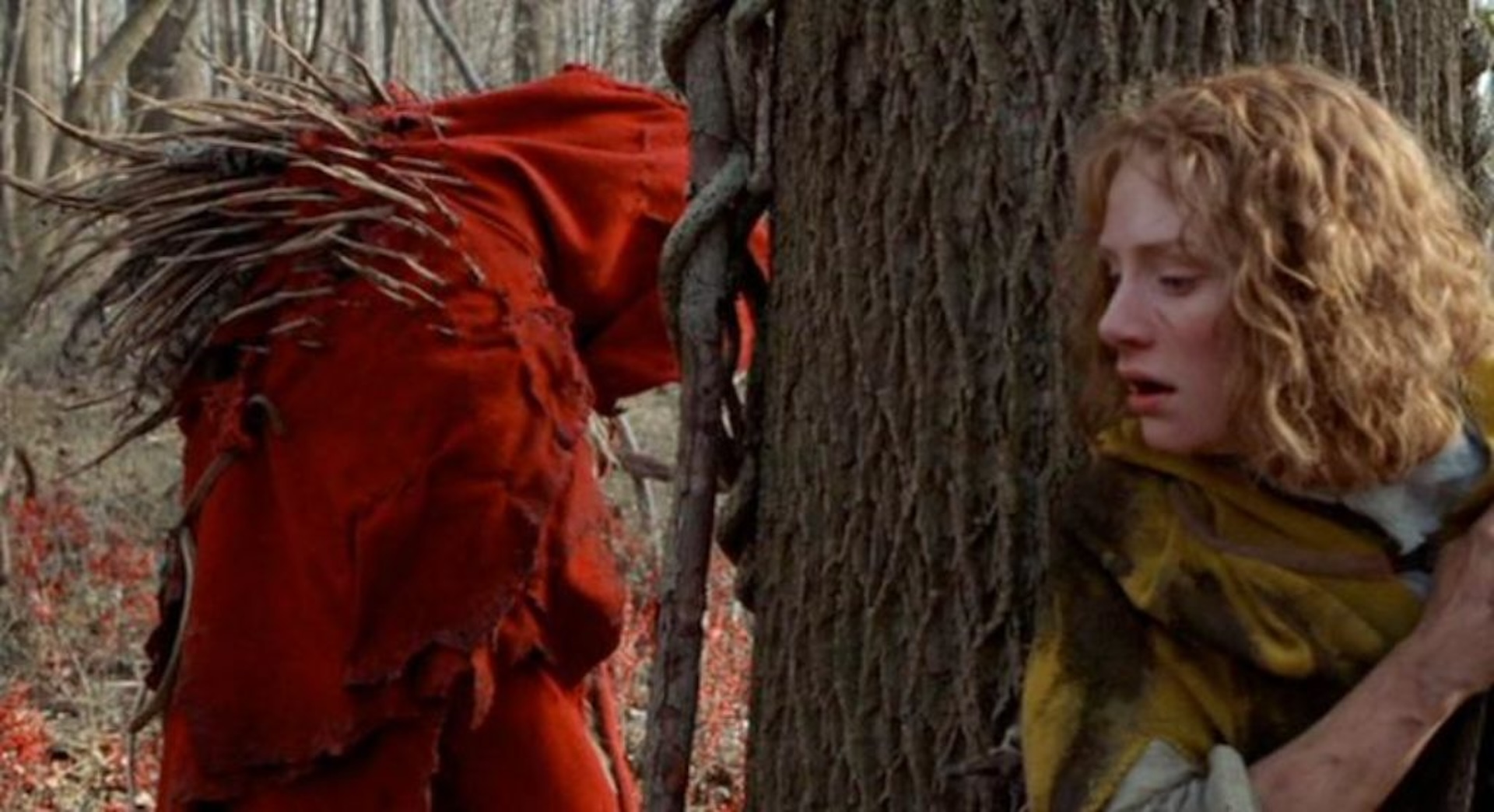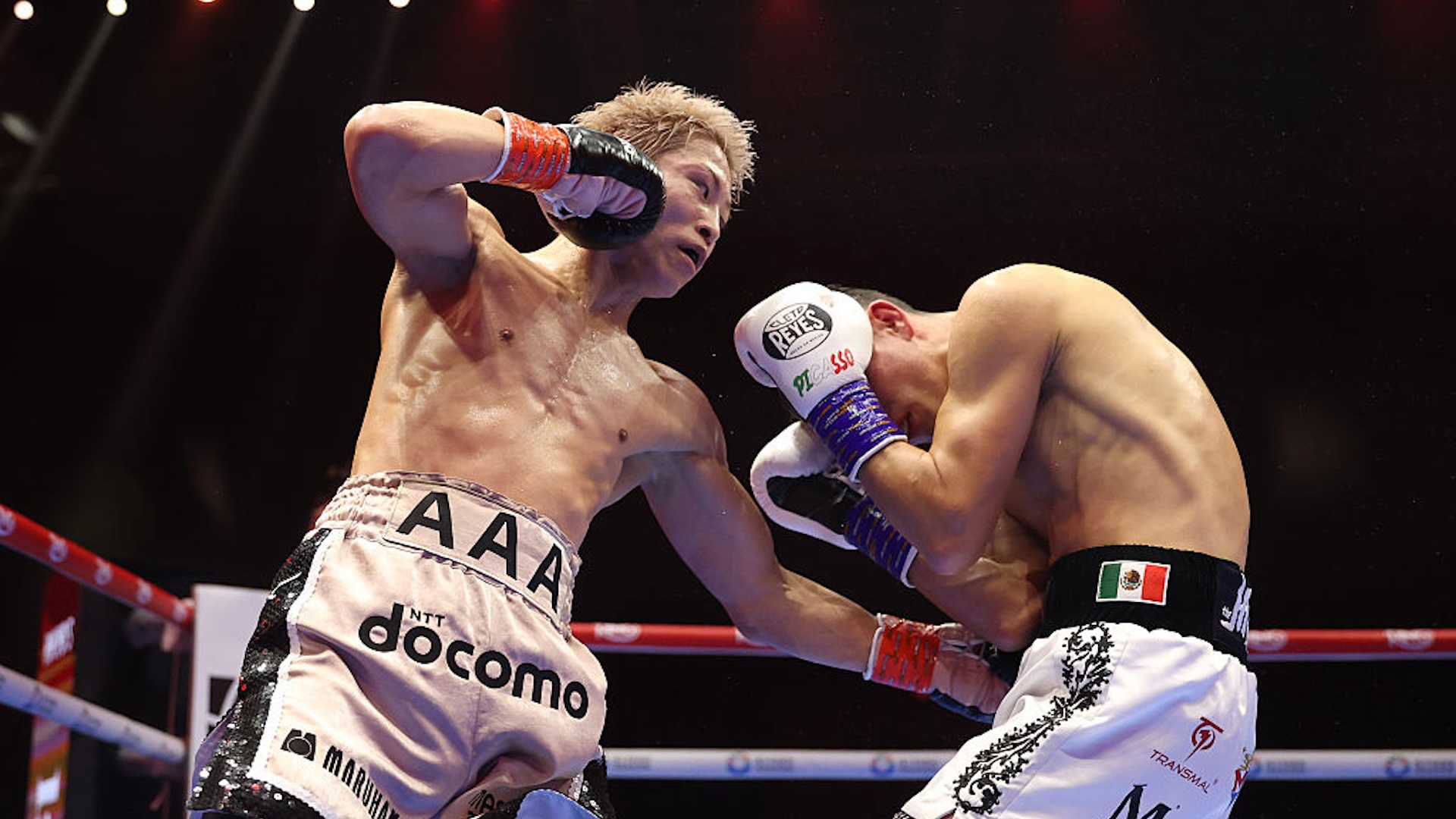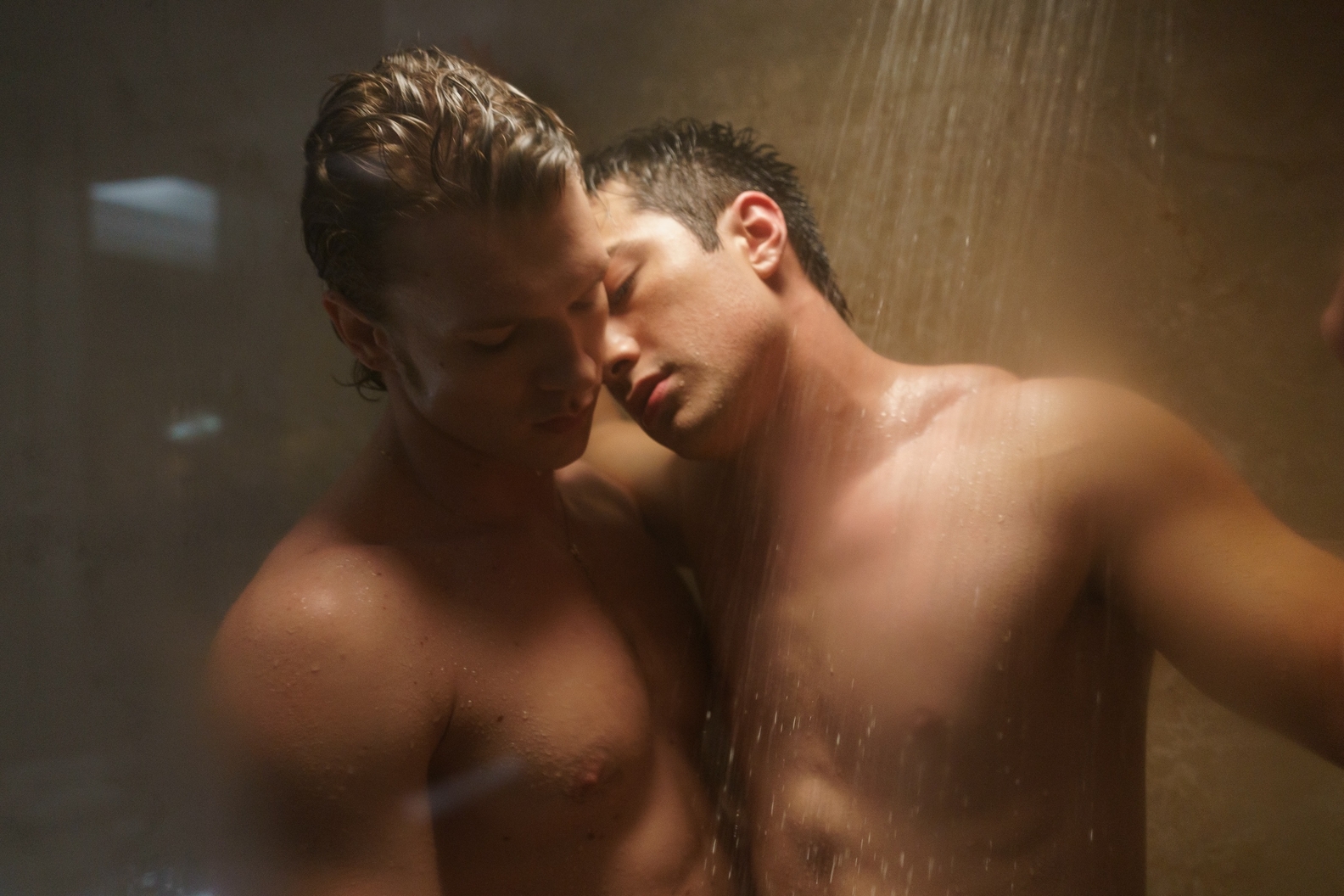Michael Koresky begins his 2004 essay on M. Night Shyamalan’s The Village with a question: Is allegory in American cinema dead? Koresky, perceptive in his diagnosis of the post-millennium American audience as a stunned and stunted one, entertained the possibility that a literate Hollywood cinema was waning because few adults in the country read. Twenty years later, I wonder if there’s also the added element that allegory is difficult to swallow, at once too obvious and too subtle, nothing we haven’t heard before and nothing we want to hear again.
It’s a dangerous time for a critic, in the wake of an event as seismic as a presidential election, to engage with art when people are trying to inject meaning into cultural objects that don’t have any. This impulse is understandable; most reactions, as I’ve seen people reassure one another online, are understandable in the wake of a traumatic return to a worse status quo. But even that characterization, trauma, feels false, hyperbolic not because there is no threat to what is coming, but because the therapy-speak that saturates so much discourse does everything but engage with, even combat the thing that occasions trauma. To endeavor to create a substantive allegory out of the social and political elements that cause so much distress at a given time, whether the so-called Trump era or post-9/11, seems foolish, naive, but these are the same descriptors that have stalked Shyamalan’s career from the very beginning.
I rewatched The Village a few weeks after Trump’s reelection was confirmed, not because I was looking for something to speak to the moment, but because I had promised my girlfriend, who loves the film, that we would finally put it on. Set in an idyllic 19th-century Pennsylvania community hidden somewhere in the woods, the titular village and its Little House on the Prairie trappings—lush valleys, colonial dresses, woolen suits, agrarian homesteading, a nominally Puritan religious culture dictating the behavior of adult and child alike—appears as it’s meant to: romantic, nostalgic, and, in Shyamalan’s hands, a setting whose superficial perfection is primed to be punctured. I remember watching The Village for the first time many years after its release and dismissing it as a lesser entry in Shyamalan’s oeuvre. Coming back to it now, I can tell that part of my writing it off had to do with a lack of patience. The Village, shot by Roger Deakins, reveals its various locations and conversations slowly, wide open vistas set against closely-framed apertures, honesty and secrecy sharing the screen until one wins out over the other.
Immediately, what a viewer who’s already seen The Village is reminded of is how melodramatic the opening titles are and how this first impression has the capacity to color one’s perception of the film as a whole: a series of skyward-facing shots roving through leafless trees, fading to black, cutting back in, fading to black again, all with an insistent, ominous score behind it. The (false) implication, of intentional, even sadistic withholding, underlined by a sense that the director is toying with you for the sake of it, is congruent with Shyamalan’s eventual fate as a has-been. By his sixth feature film, Shyamalan seemed primed to buckle under the weight of his own reputation, with 2004 marking a time, months before the reelection of George W. Bush, when the filmmaker’s brand of twisty, quiet suspense began, for many contemporary critics, to curdle into something frustratingly predictable. Roger Ebert, who later put the film on his Most Hated list, wrote in his one-star review of The Village, “It's so witless, in fact, that when we do discover the secret, we want to rewind the film so we don't know the secret anymore.”
Even now, amidst a second wind in his career, it’s a mistake to hang too much anticipation or importance on Shyamalan’s twists. They are integral to many of his films, but they aren’t the point. For one thing, the secret that Ebert derides in The Village is unlike any in the filmmaker’s other work. It’s one deliberately kept out of sight, a lie fabricated by the founders of the community that, like the American obsession with maintaining freedom at the cost of someone else’s liberty, papers over an inability to face reality as it is. For another, like any good narrative that stands up to the scrutiny of multiple viewings, to know what’s actually going on in The Village is to watch an entirely different, and in this case, more absurd, more disturbing and melancholic movie.
Retreating from the urban violence of the city in 1970s, the founders of the village, who met as members of a counseling group and who each lost a loved one to murder, opt to stage their own utopian paradise stuck out of time. There is no money and everything is shared, an anodyne communist dream that masks the conservative impulse of the village’s very existence, which is made even more ironic by the fact that the village sits inside a private wildlife preserve funded by the inherited wealth of one of the elders. The founders’ conception of the 19th century is one wholly informed by books and pop culture. Koresky, in his Reverse Shot essay, writes, “The era to which they wish to return, when cooperatives dotted the landscape, was hardly a moment of innocence–so here, by regressing rather than reforming, the village’s elders replace the true radicalism of their forefathers (abolitionists, women’s and workers’ rights activists, education reformers) with conservatism. History truly becomes nothing more than a pageant, with only empty signifiers of a falsely political and superficially polite past.”
As phony and flimsy as the paeans to the simplicity and wholesomeness of the early-to-mid 20th century espoused by any tradwife influencer or patriarchal breeder, the entirety of the village’s aesthetic and cultural makeup is nothing more than playacting. The anachronistic vernacular the original generation merely cosplays with, like committed method actors in The Crucible, becomes the only way their children and grandchildren know how to speak. Their conception of an innocent, safe community is premised on ignorance (there is seemingly no literature, no music, no custom beyond what the founders have simply made up) and homogeneity. Shyamalan, one of American cinema’s great investigators of whiteness, furnishes the village’s community with an entirely white populace, the erasure of either people of color or indigenous heritage most blatantly illustrated by the fact that, for the younger generations, the possibility of their existence doesn’t even occur.
The only way to manage the villagers’ loyalty, and their faith, is through fear. The red-cloaked porcupine monsters that roam the woods and sometimes infiltrate the borders of the community are more frightening in short glimpses, but their ramshackle construction becomes another revealing detail—not some true eldritch creature, merely a costume. Really, there is very little holding the village community together and the insubstantiality of its unifying ethos serves as a kind of microcosm of America. At the point when the secret has been revealed by Edward Walker (William Hurt), the leader of the founders, to his daughter Ivy (Bryce Dallas Howard), Edward must explain his actions to the other elders. “Who do you think will continue this place, this life?” he says. “Do you plan to live forever? It is them that our future lies.” This scene is played as a romantic act of defiance, a means of convincing the other founders that Ivy’s quest to save her fiance Lucius (Joaquin Phoenix) from death after a near-fatal stabbing is a justifiable breach of the village’s sacred rule never to cross the border. But the truth of Edward’s argument is a dark one. The future of a community built on deceit, myopia, and small-minded recalcitrance depends on the next generation reenacting those same practices, values, and beliefs, remaining not only willfully blind (compared to Ivy, who is actually blind, and yearns to understand the truth) but defensive of that blindness.
What interested me most about this go-round of The Village was the emotional arc of one side character, August Nicholson (Brendan Gleeson), one of the village elders. The film starts with a funeral for August’s young son and throughout, his grief cracks his belief in the project he and his fellow conspirators have enacted. “You may run from sorrow as we have,” August tells Lucius. “Sorrow will find you.” Later, after Edward confesses the truth to Ivy, August defends Edward, saying, “We must not run from heartache … heartache is a part of life, we know that now.” Situating grief as the animating spirit behind the construction of the village is a deceptively radical one, certainly an idea I resisted upon my initial viewing of the film. Shyamalan is a romantic and his films, by no means consistent in quality or execution, all turn on some iteration of the belief that love can be a destabilizing, powerful force. Indeed, Edward Walker’s love for his daughter, who is compelled by her love for Lucius, allows him to see the “farce” of the village.
This sentimentality isn’t a gimmick for Shyamalan, it’s an earnest worldview. “There is no one in this village who has lost someone irreplaceable, who has felt loss so deeply that they question the very merit of living at all,” Edward tries to explain to Ivy. That grief could spur the elders to create what amounts to an elaborate dream —a theme contemporary to The Village’s release that serves as a tidy encapsulation of post-9/11 America’s twinned hurt and retributive global stance–feels commensurate with a specifically American aversion to death and injustice, which runs contradictory and parallel to a specifically American infatuation with punitive justice and state-sanctioned murder. “Where is American Valhalla?” Iggy Pop sings. “Death is the pill that’s tough to swallow.” The village elders do not see their actions as any sort of double standard because they have manufactured a reality in which their exception to society is a pure one that preserves “innocence.” When Edward consecrates each village supper with the simple statement, “We are grateful for the time we have been given,” it is as much a spiritual prayer as a fearful one.
Unlike most movies that are lauded for aging well, The Village becomes thornier with time. Its simplicity cuts through a lot of critical noise and, despite the penchant for Shyamalan’s films to be so publicly spoiled, withstands the viewer’s knowledge of what’s to come. It’s odd, too, given that Shyamalan is a filmmaker who loves America. Or at least, he loves the ideal of what America, at its rosiest and most heroic, might stand for. It’s difficult to view Joaquin Phoenix’s triumphant baseball bat-bashing of the alien at the end of Signs as anything other than America versus the world.
By contrast, The Village depicts a curdled, but not necessarily inaccurate exaggeration of the American Dream. If the popular understanding is that America is the land of opportunity, The Village implies that the country is better viewed as a place in which one can, for a time, successfully erase or escape their past. How often one hears about a fresh start, a new beginning, a second chance, the veracity of one’s labor obliterating both obstacles and demons alike. It’s not a contradiction that conservatives are so obsessed with the country’s heritage, either. There is perhaps no greater setting for the manufactured, proud identity of a nation than a past that’s constantly litigated and sanded down. America-as-blank-slate fits more snugly into most any passive analysis of politician sloganeering. Contrast Harris-Walz’s “We’re not going back” with Trump-Vance’s “Make America Great Again” and one is left with the same question: What exactly is back there?
If one looks closely enough, they might realize that both slogans traffic in allegory as well. There is no objective greatness and America cannot go anywhere. It’s one of the failures of our collective illiteracy that anyone could take either candidate’s sentiments, including the candidates themselves, literally. That’s perhaps what’s so moving about The Village, in tandem with its performances, its cinematography, and those vibrant colors: the sense that what Shyamalan has captured is truly timeless. It’s love that provides the briefest spark for change, but whether that change is pursued, let alone preserved, is dubious. Control is another of the film’s major themes and it’s a form of psychic power that, as warm and empathetic as Edward Walker can be, is difficult for him to surrender. All of this is a microcosm of far greater and more complex systems and realities and none of it is a blueprint for the future.
I’m often railing against the instrumentalization of art, the facile but ubiquitous ways it’s dissected for representation, utilitarian meaning, and offense. In some ways, the people who engage with art simply to rip it apart expect something from it that art can’t do. It can’t be a dead end. What The Village provides, that only a rare crop of films do, is the opportunity for its audience to think—about its premise, its suppositions, its conclusions. The Village is not America, but a piece of America is trapped inside it, ready to be taken out, waiting to be examined.







